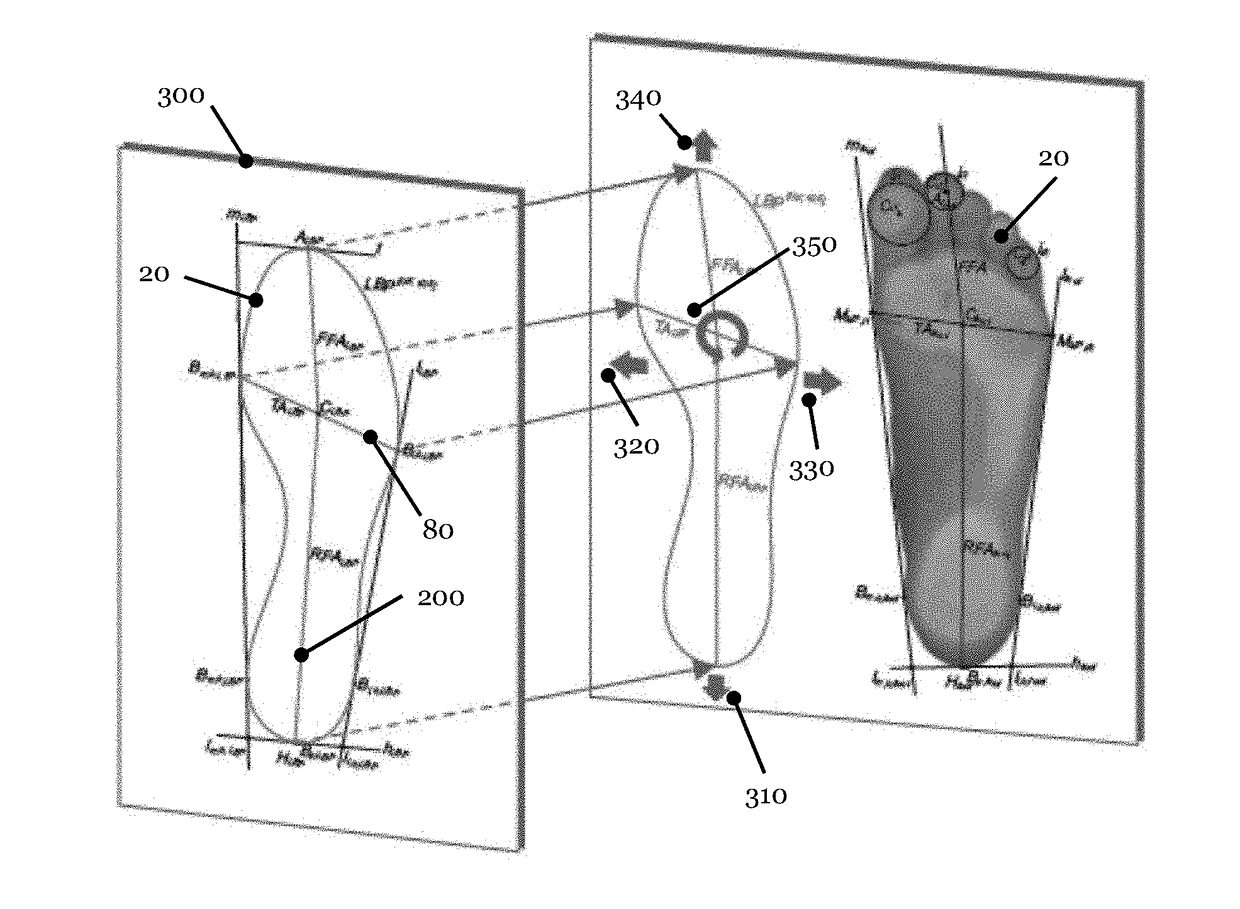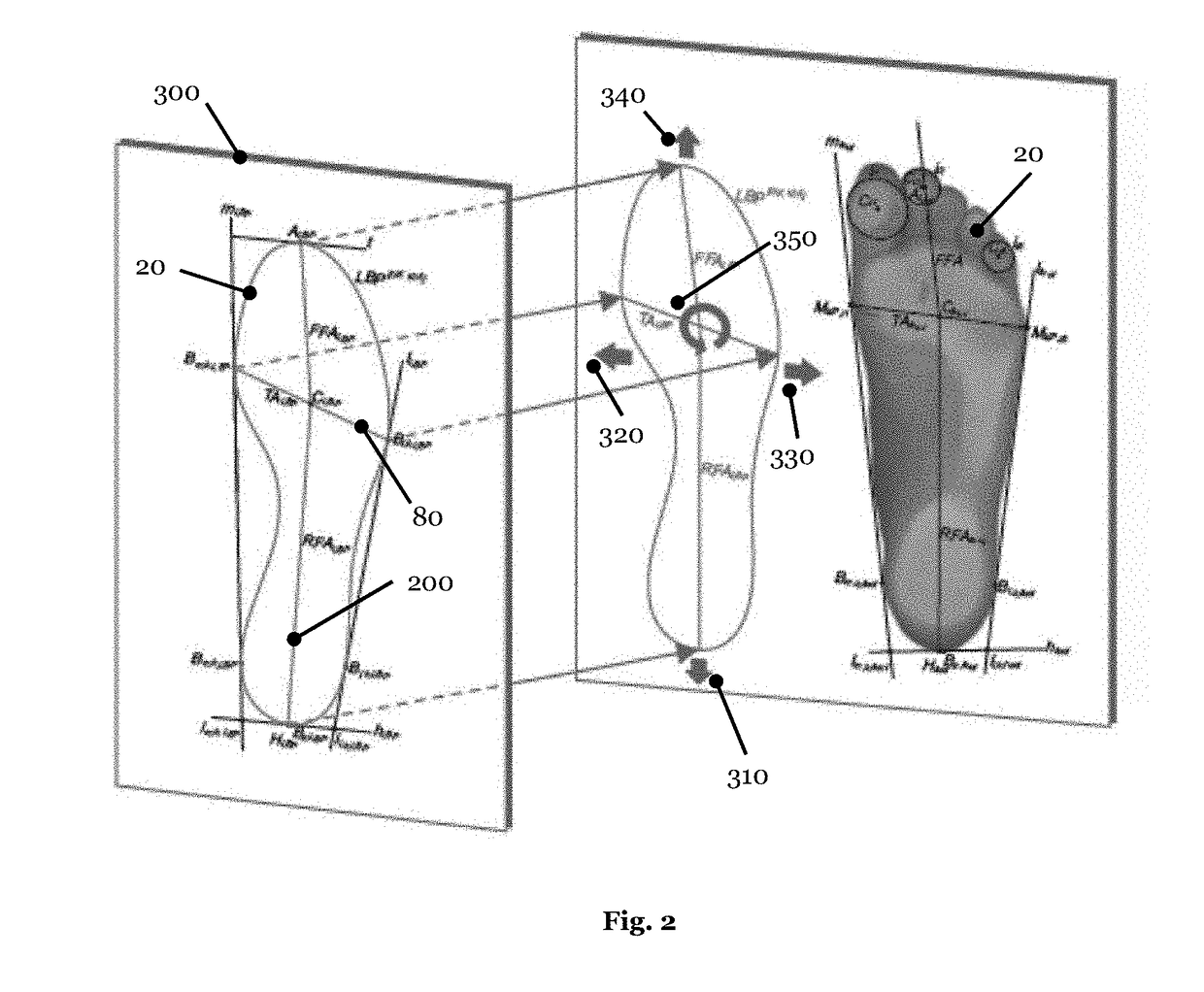Digital last
a digital and last technology, applied in the field of digital lasts, can solve the problems of not being able to correct for foot misalignment and typically not being taken into account, so as to reduce the wearing comfort of shoes, improve fit traction, and improve functional flexibility
- Summary
- Abstract
- Description
- Claims
- Application Information
AI Technical Summary
Benefits of technology
Problems solved by technology
Method used
Image
Examples
Embodiment Construction
[0045]FIG. 1 shows the bottom 10 of a human foot as well as the contour of a last, in particular a lower bottom pattern 20 (also referred to as LBP) of the last. A heel line 30 is shown which corresponds to a tangent at the rearmost point of the heel when the contour of the foot is projected onto the ground (see also FIG. 4 below). Moreover, a medial tangent line 40 and a lateral tangent line 50 are illustrated. The medial tangent line contacts one point 160 in the heel area and one point in the forefoot area 170. The lateral tangent line 50 contacts one point 180 in the heel area and one point in the forefoot area 190. The medial and lateral tangent lines can be used to obtain the location of the metatarsophalangeal joint I (also referred to as MMPJ1) (medial) and of the metatarsophalangeal joints V (also referred to as MMPJ5) (lateral). MMPJ1 and MMPJ5 are generally about on the axis comprising the contact points 170, 190 of the medial and lateral tangent lines 40 and 50 in the fo...
PUM
 Login to View More
Login to View More Abstract
Description
Claims
Application Information
 Login to View More
Login to View More - R&D
- Intellectual Property
- Life Sciences
- Materials
- Tech Scout
- Unparalleled Data Quality
- Higher Quality Content
- 60% Fewer Hallucinations
Browse by: Latest US Patents, China's latest patents, Technical Efficacy Thesaurus, Application Domain, Technology Topic, Popular Technical Reports.
© 2025 PatSnap. All rights reserved.Legal|Privacy policy|Modern Slavery Act Transparency Statement|Sitemap|About US| Contact US: help@patsnap.com



